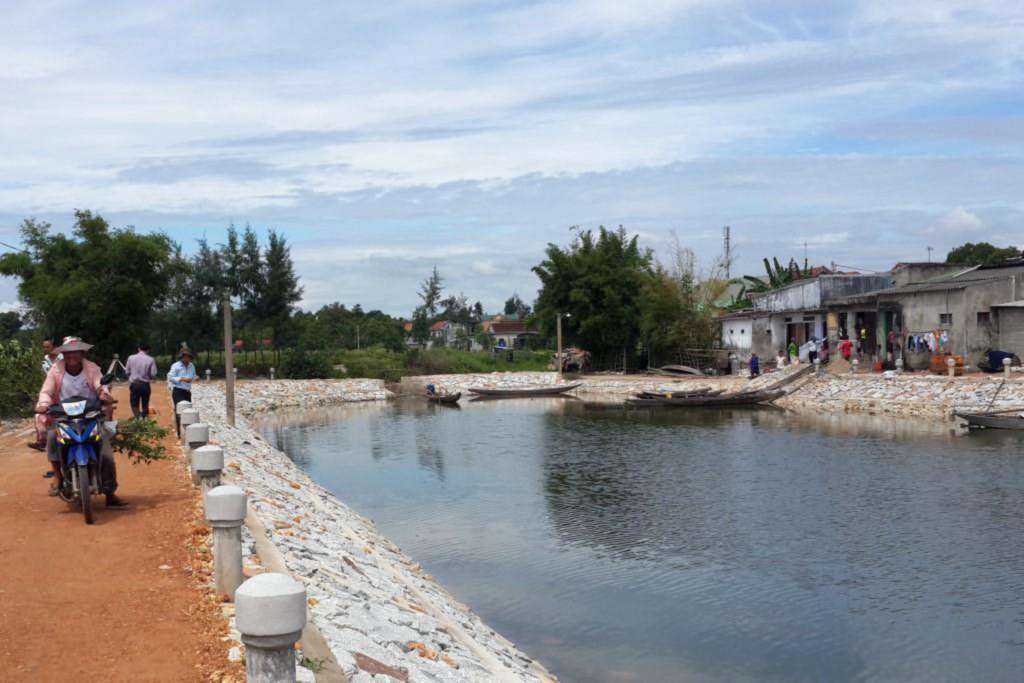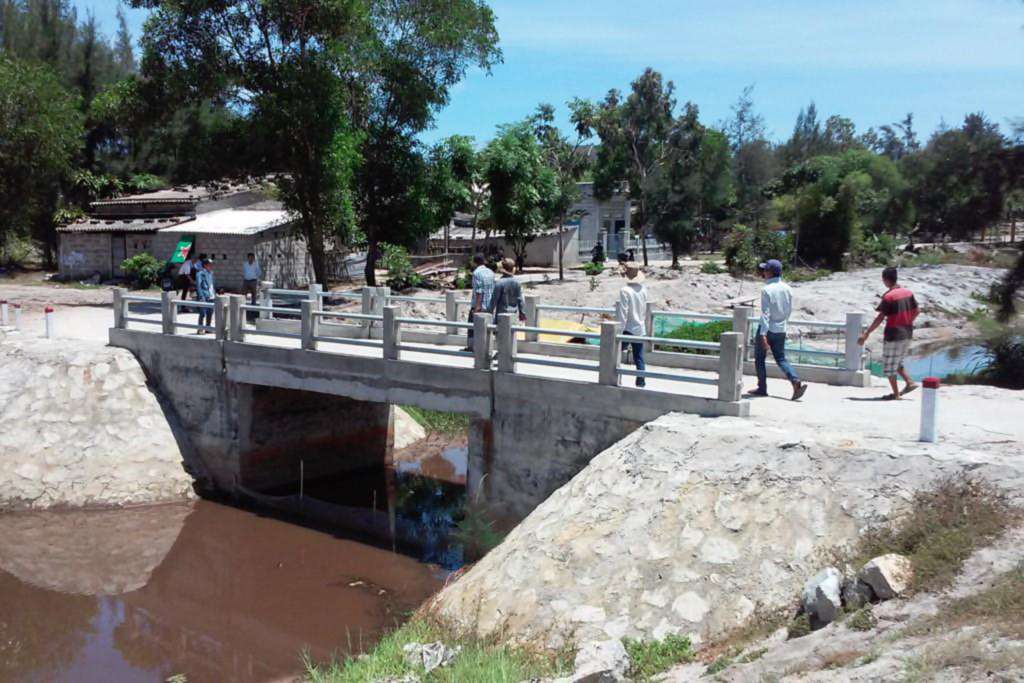Vietnam - Promoting community-based approaches in climate-adaptive and resilient infrastructure planning and implementation
One of the important intervention areas of the Luxembourg-funded Climate-adapted Local Development and Innovation VIE/033 project consisted of reinforcing and developing climate-adaptive and resilient physical infrastructure in target communes, through improving and/or protecting people’s livelihoods against various impacts of climate change such as floods, storms, the salinisation of land and lagoon water, dune and river erosion, etc.
Around 45% of the project budget was dedicated for small-scale infrastructure (INFRA) sub-projects and these are split into the following 8 categories: river dykes and embankments (e.g. to protect productive land), bridges and sluices (e.g. to prevent further salinisation of paddy fields), pump stations, irrigation and drainage canals, kindergarten classrooms with shelter function (e.g. to enable women to engage in productive activities), boat shelters (e.g. to protect fishing folk from damage to their main economic asset during typhoons), access roads to productive areas (usually with dyke or evacuation function), and water tanks.
 School children
School children
The interventions were proposed jointly by the community and local authority during annual project planning workshops, and were based on 5-year Socio-Economic Development Plans (SEDP) that resulted from the Local Participatory Planning Process (LPPP) and Community Vulnerability Capacity Assessment (CVCA) reports that had been developed at the start of the project.
Each district put forward a pre-selection of sub-projects to project management, which were then reviewed and evaluated against a set of social and economic criteria, in order to find out which proposal would add most value to the project’s mission of effectively improving and/or protecting people’s livelihoods.
 Le Binh boat shelter
Le Binh boat shelter
In order to assess the practical situation and technical aspects as well as their feasibility, project management, including the project’s Technical Adviser for Infrastructure, carried out field observations and assessments for each suggested sub-project, with the participation of commune authorities and community leaders. The proposed interventions were then ranked based on their scoring in field assessment reports that were prepared for each one of them, providing a clear picture of the cost-benefit analysis. Highest priority was contributed to poorest and most vulnerable villages, and resettlement areas were included in the list by default, due to their special nature and preferential focus in the project. Subsequently, field assessment reports were presented, assessed and discussed in detail in a meeting with relevant partners, and the final list selected based on available budgets. Selected INFRA sub-projects were then included in project annual work plans, and 78 such projects have been selected and implemented over the project’s four-year timeframe.
In line with the Paris Declaration on Aid Effectiveness aimed at increased government ownership and donor harmonisation and alignment, and its national translation in the Hanoi Core Statement, these sub-projects were, from the start of the project, carried out through delegation, whereby the district partner agencies were in charge of the budget, procurement and technical management, with support and supervision from the VIE/033 project team.
 Nho bridge
Nho bridge
As for outcomes, the 78 completed infrastructure interventions have had significant impact on the lives and livelihoods of people in target areas, especially those households suffering significant damage and loss caused by disasters. Over 30 000 households have had their livelihoods and resilience improved, and 5 653 hectares of productive land are now better protected against the impacts of climate change. Project M&E data indicate that 84% of the interventions were completed on time and were found to be resilient. Only three facilities required minor maintenance and two were in need of more serious repair following last November’s major flood. These findings are testimony of the high quality, praised by both technicians and beneficiaries, as well as of effective Operation, Maintenance and Management (OM&M) systems that were put in place, as consistently reported throughout project duration. As of end 2017, 98.6% of all sub-projects had sufficient OM&M measures in place, thus exceeding the initial target of 90%.
Local beneficiaries demonstrated a strong commitment and ownership toward the project’s infrastructure interventions. They were actively involved in the whole process -- from the initial needs identification and proposal of infrastructure sub-projects, to planning and financial contributions (usually a standard 2% of the total cost), to supervision during the construction phase and maintenance tasks after handover. Thua Thien Hue province is now considering wider application of this participatory approach in planning and implementing infrastructure projects.
↑ To the top
